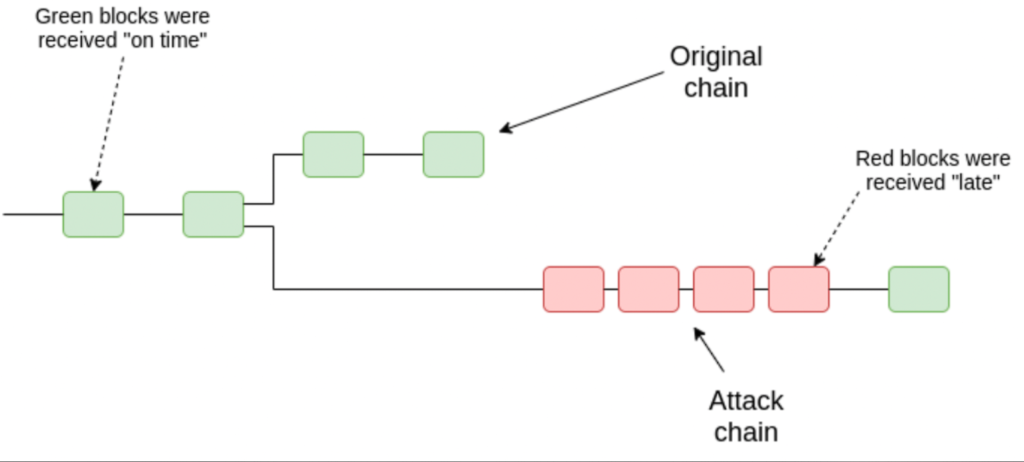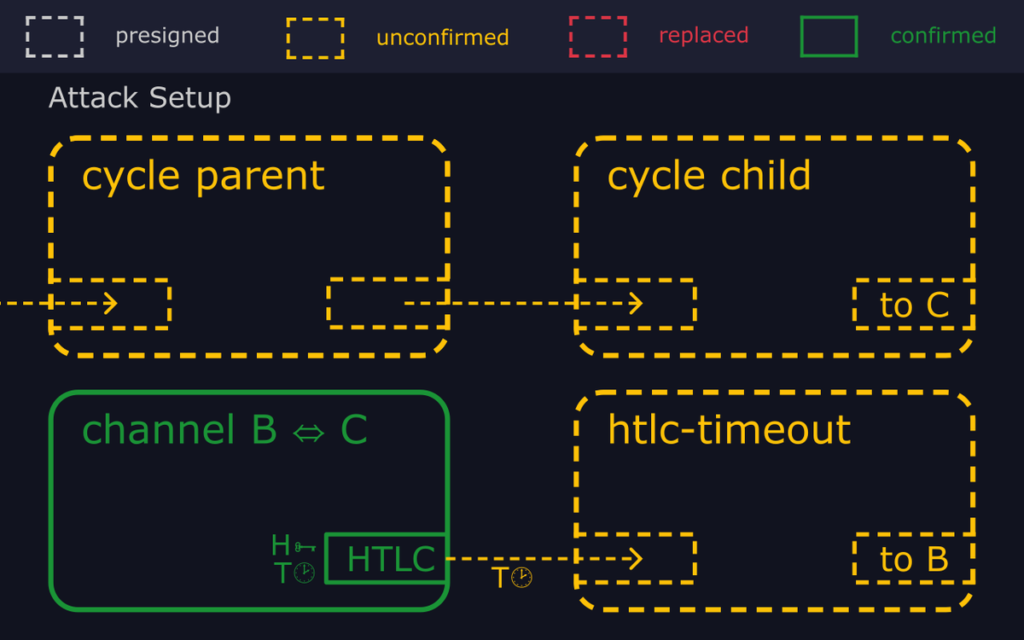- The replacement cycling attack is a vulnerability threatening the foundation of the Bitcoin Lightning Network.
- Bitcoin Lighting network has significantly improved its volume from $12.1 million and 303 BTC in 2021 to $78.8 million and 2950 BTC in 2023.
- The Proof-Of-Stake generally ensures that no single entity exceeds a certain power threshold in any centralized network.
The web3 ecosystem has transformed and improved several industries. Its decentralized nature has ushered in a new way of storing, transacting, and securing data without a centralized authority. The crypto industry has massively grown in two decades due to its revolutionary take to improve financial systems. Unfortunately, its success has also attracted unwanted attention from potentially dangerous groupings. Aside from facilitating illegal activities like money laundering, rising concern over crypto security issues has led many to question the industry’s credibility.
So far, the industry has lost billions due to several well-known blockchain attacks. These perpetrators use the technology’s new nature to discover new vulnerabilities within the system. Thus, whenever cryptocurrency is discussed, security is among the top issues many within the community differ.
In recent news, the Bitcoin Lightning Network has struck a significant drawback. Analysts have discovered a new blockchain attack, a replacement cycling attack. As Bitcoin recently improved substantially, many have wondered if this may be a sign to tread when dealing with the original crypto coin carefully.
Blockchain attacks trending in 2023
The entire concept of blockchain security is virtually new, with security analysts constantly finding new ways to improve it. Initially, when blockchain technology shook the whole of the financial spectrum, many security analysts took its innate features as a foolproof concept. Technically, blockchain technology on its own rendered typical web2 attacks obsolete. Its decentralized nature gives it an inherent security feature, preserving the integrity of the data it stores.
In addition, its anonymity prevented any third party from interfering with any transaction. These and many more features placed blockchain as an all-around technology with its security measures. Unfortunately, the Mt Gox hack shattered this perception and showcased how wrong we all are.
Also, Read Bitcoin Lightning Network Interconnects Africa and European financial systems.
Security in technology is generally a never-ending cycle of successes and failures. For instance, a new security system curbs known vulnerabilities and will receive substantial recognition. Unfortunately, this period is finite, and in a matter of time, someone will eventually crack the “impenetrable wall,” compromising its technology. From this flaw, security analysts can understand where they went wrong and how to improve it, and the cycle starts again.
The same applies to blockchain security and attacks.
In the past decade, blockchain attacks have significantly reduced in quantity but have improved in variety. What started as a single blockchain attack has developed into numerous methods, each showing growth potential. Crypto security issues have significantly grown, with exchanges going as far as acquiring certification to prove the quality of their blockchain security.
Trending blockchain attacks
Common blockchain attacks plaguing the 2023 crypto ecosystem include several new and old practices. For starters, the 51% attack is the most senior and most commonly used blockchain attack since the dawn of digital currency. Generally, 51% attacks, or most attacks, when an entity gains more than 50% of the computational power on a blockchain network.
This blockchain attack has shut down many exchanges and decentralized networks but will eventually grow into a legal method. Its very nature caused blockchain security experts, developers, and exchanges to adopt a new consensus mechanism, Proof-of-Stake. The POS generally ensures that no single entity exceeds a certain power threshold in any centralized network.

The basic functionality of 51% attack and its ability to compromise a decentralized network.[Photo/Bitcoin-Magazine]
Blockchain attacks have improved over time, and smart contact immutability is one of them. From the get-go, smart contracts form the foundation of any blockchain security systems in New York. To maintain its integrity and functionality, smart contracts are immutable and can be changed once launched.
From the FTX crash, it became clear that organizations can become a potential threat to the industry itself. If an exchange alters the smart contract before launching, it may have hidden privileges unknown to the user. Scammers use this opportunity to steadily siphoned funds from the network without anyone realizing it.
Also, the Read Bitrue crypto exchange platform lost US$23 million to a crypto hack.
Among the latest blockchain attacks in 2023 are consensus protocol attacks. Hackers have known the vulnerable point of any blockchain security is its consensus protocol. Its methodology may defer depending on which kind of mechanism, but if a hacker gains access, it’s generally the end of any exchange.
Unfortunately, in recent news, experts have discovered a new form of blockchain attacks threatening the Bitcoin Lightning Network, a replacement for the cycling network.
Blockchain attacks target the Bitcoin lightning network.
Antoine Riard became the martyr who revealed the alarming vulnerability amid the trending Bitcoin Lighting network. According to Antonie, the replacement cycling attack is a vulnerability threatening the foundation of his and his team’s project. As a result, Antonie resigned from his post as lead developer, clearing his name and conscience of any participation.
How the Replacement Cycling Attack Works
Bitcoin Lightning Network operates as a second-layer network on top of Bitcoin’s blockchains. Its primary goal is to scale the BTC transaction capabilities by facilitating off-chain, peer-to-peer transactions. This allows the users to establish payment channels within the network, facilitate multiple transactions off-chain, and record any information onto Bitcoin’s ledger system.
The replacement cycling attack’s core function is manipulating the Hash/Time Lock Contact output. This feature secures transactions while they are transverse throughout the Bitcoin network.
The Bitcoin Lighting network has significantly grown over the years. Its ability to bridge the gap between digital currency and online payment platforms has contributed substantially to adopting digital assets. According to Investing.com, the Bitcoin Lighting network has significantly improved its volume from $12.1 million and 303 BTC in 2021 to $78.8 million and 2950 BTC in 2023.

The basic functionality of the Replacement Cycling Attack.[Photo/X.com]
The Replacement cycling attack unfolds the multi-step process. For instance, the Bitcoin Lighting network routes a payment through Bob, from Ezekiel to Juma, and the HTLC outputs in Bob’s pre-signed channel commitment safeguard it. The vital component of this process is the timelock mechanism, ensuring the outgoing HTLC to Ezekiel’s expires. This feature ensures that neither Ezekiel nor Juma’s HTCL collides, giving Bob a window to reach in case of crypto security issues.
The replacement cycling attack exploits this mechanism, forcing Bob to time out the transaction on-chain when Juma fails to reveal the payment preimage before the time clock expiration. This forced Bob to broadcast a transaction to close his channel, with Juma reclaiming his funds through an “HTLC-timeout” transaction.
Also, Read Nigerian Bitcoin Lightning Node finally Achieved.
This allows the attacker to pose his version of an “HTLC preimage” with a higher fee rate, replacing Bob’s transactions in the network’s pool. The attacker repeats this procedure, thwarting Bob’s efforts to reclaim his funds. In a nutshell, the hacker gains Bob’s funding from hosting his device in the channel.
Potential Dangers of the Replacement Cycling Attack
Before resigning, Antonie highlighted that this potential flaw could eventually cripple the Bitcoin Lighting New York. The blockchain attack specifically targets the mechanism that facilitates security, causing the platform to become potentially dangerous for Bitcoin’s entire blockchain security system.
Typically, what makes blockchain attacks difficult is its ability to evolve in a new environment. If the replacement cycling attack found its way onto the leading blockchain network, it could compromise the entire ecosystem, redefining the phrase crypto security issues. Annie has claimed that remedying the problems thoroughly could require modifying some rules within Bitcoin.
This feat, unfortunately, will require the effort of the entire decentralized community to pull off. However, this method raises several concerns since altering the core rules of Bitcoin opens a window to additional blockchain attacks. Despite what many experts and traders state, Bitcoin still forms the foundation of the entire cryptosystem. If several blockchain attacks were to compromise its functionality, the whole ecosystem would fall in a matter of days. The issue may affect the Bitcoin Lightning network now, but if unaddressed, it could end the career of digital currency as we know it.
- SEO Powered Content & PR Distribution. Get Amplified Today.
- PlatoData.Network Vertical Generative Ai. Empower Yourself. Access Here.
- PlatoAiStream. Web3 Intelligence. Knowledge Amplified. Access Here.
- PlatoESG. Carbon, CleanTech, Energy, Environment, Solar, Waste Management. Access Here.
- PlatoHealth. Biotech and Clinical Trials Intelligence. Access Here.
- Source: https://web3africa.news/2023/11/03/news/blockchain-attacks-threaten-the-foundation-of-bitcoin/
- :has
- :is
- :where
- 1
- 2021
- 2023
- 32
- 33
- 51% attack
- 8
- a
- ability
- access
- According
- achieved
- Achilles
- acquiring
- activities
- addition
- Additional
- adopt
- Adopting
- affect
- africa
- again
- All
- all-around
- allows
- also
- Amid
- among
- an
- Analysts
- and
- Anonymity
- any
- anyone
- applies
- ARE
- AS
- aside
- Assets
- attack
- Attacks
- attention
- attracted
- authority
- basic
- BE
- became
- become
- before
- between
- billions
- binance
- Bitcoin
- Bitcoin lightning network
- Bitcoin Network
- blockchain
- blockchain attacks
- Blockchain network
- Blockchain security
- blockchain technology
- blockchains
- bob
- BRIDGE
- broadcast
- BTC
- but
- by
- CAN
- capabilities
- Career
- carefully
- case
- caused
- causing
- centralized
- certain
- Certification
- changed
- Channel
- channels
- claimed
- clear
- Clearing
- Clock
- Close
- Coin
- Coindesk
- COM
- commitment
- commonly
- community
- component
- compromise
- compromising
- computational
- computational power
- concept
- Concern
- Concerns
- Consensus
- consensus mechanism
- constantly
- contact
- contract
- contracts
- contributed
- Core
- could
- crack
- Crash
- Credibility
- crypto
- Crypto Coin
- Crypto ecosystem
- crypto exchange
- Crypto Industry
- crypto security
- cryptocurrency
- Currency
- cycle
- Dangerous
- dangers
- data
- Days
- dealing
- decade
- decades
- decentralized
- decentralized network
- decentralized networks
- Depending
- Despite
- developed
- Developer
- developers
- device
- differ
- difficult
- digital
- Digital Assets
- digital currency
- discover
- discovered
- discussed
- down
- due
- each
- ecosystem
- effort
- efforts
- end
- ensures
- ensuring
- Entire
- entity
- Environment
- establish
- European
- eventually
- evolve
- exceeds
- exchange
- Exchanges
- experts
- expiration
- exploits
- facilitate
- facilitates
- facilitating
- fails
- Fall
- far
- feat
- Feature
- Features
- fee
- Finally
- financial
- financial systems
- finding
- flaw
- For
- forcing
- form
- forms
- found
- Foundation
- from
- FTX
- ftx crash
- function
- functionality
- funding
- funds
- Gains
- gap
- generally
- gives
- Giving
- goal
- going
- Gox
- Grow
- grown
- Growth
- growth potential
- hacker
- hackers
- Have
- Hidden
- higher
- Highlighted
- his
- hosting
- How
- How To
- However
- HTTPS
- if
- Illegal
- immutability
- immutable
- improve
- improved
- in
- include
- industries
- industry
- industry’s
- information
- inherent
- initially
- innate
- instance
- integrity
- interconnects
- interfering
- into
- investing
- Investopedia
- issue
- issues
- IT
- ITS
- itself
- Kind
- Know
- known
- latest
- launched
- launching
- Laundering
- lead
- leading
- Led
- Ledger
- ledger system
- Legal
- Lighting
- Lighting Network
- lightning
- Lightning Network
- Lightning Node
- like
- lost
- maintain
- MAKES
- manipulating
- many
- massively
- Matter
- max-width
- May..
- measures
- mechanism
- method
- Methodology
- methods
- million
- money
- Money Laundering
- more
- most
- multiple
- name
- Nature
- Neither
- network
- networks
- New
- New York
- news
- no
- node
- now
- numerous
- Nutshell
- obsolete
- of
- off
- Old
- on
- On-Chain
- once
- ONE
- online
- onto
- opens
- operates
- Opportunity
- or
- organizations
- original
- out
- output
- over
- own
- participation
- party
- past
- payment
- Payment channels
- peer to peer
- Peer-to-Peer Transactions
- perception
- period
- platform
- Platforms
- plato
- Plato Data Intelligence
- PlatoData
- Point
- pool
- PoS
- pose
- Post
- potential
- potentially
- power
- practices
- preserving
- primary
- privileges
- problems
- procedure
- process
- project
- Proof-of-Stake
- protocol
- Prove
- quality
- quantity
- question
- raises
- Rate
- reach
- Read
- realizing
- receive
- recent
- recently
- recognition
- record
- Redefining
- Reduced
- rendered
- replacement
- require
- resigned
- resigning
- result
- reveal
- Revealed
- revolutionary
- rising
- routes
- rules
- s
- same
- Scale
- Scammers
- Secures
- securing
- security
- Security Measures
- senior
- several
- shook
- showcased
- Shut down
- sign
- significant
- significantly
- since
- single
- smart
- smart contract
- Smart Contracts
- some
- Someone
- specifically
- Spectrum
- started
- starts
- State
- steadily
- Still
- stores
- storing
- substantial
- substantially
- success
- system
- Systems
- Take
- Target
- targets
- technically
- Technology
- than
- that
- The
- their
- Them
- These
- they
- Third
- this
- thoroughly
- threat
- threshold
- Through
- throughout
- Thus
- time
- to
- took
- top
- Traders
- transacting
- transaction
- Transactions
- transformed
- tread
- trending
- true
- two
- typical
- typically
- understand
- unfortunately
- unknown
- unwanted
- use
- used
- User
- users
- variety
- version
- very
- virtually
- vital
- volume
- Vulnerabilities
- vulnerability
- Vulnerable
- Wall
- Way..
- ways
- we
- Web2
- Web3
- Web3 Ecosystem
- well-known
- went
- were
- What
- when
- whenever
- which
- while
- WHO
- whole
- will
- window
- with
- within
- without
- would
- Wrong
- years
- york
- zephyrnet













